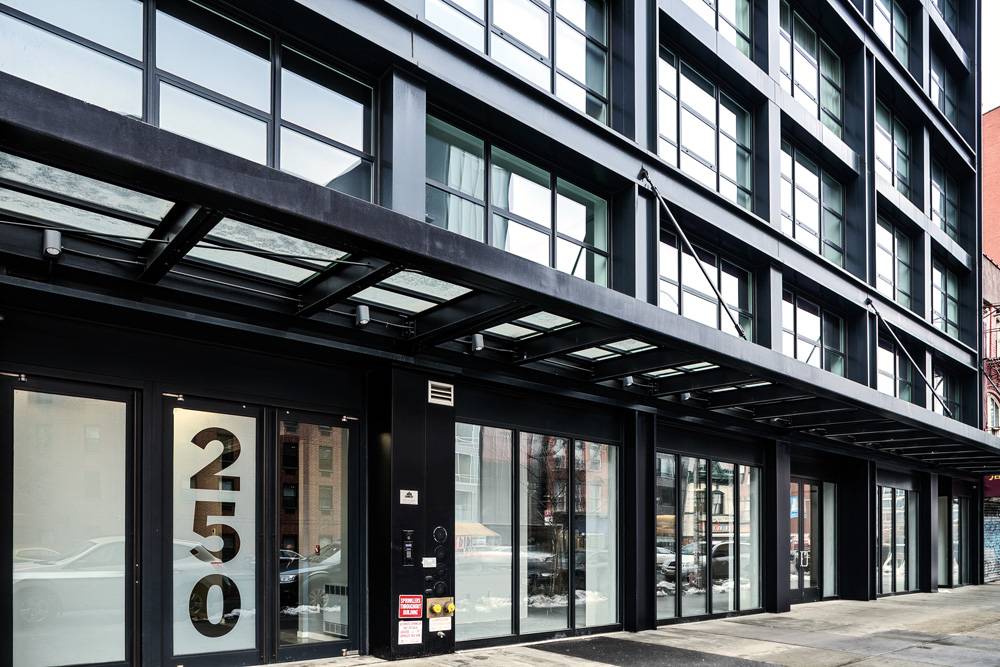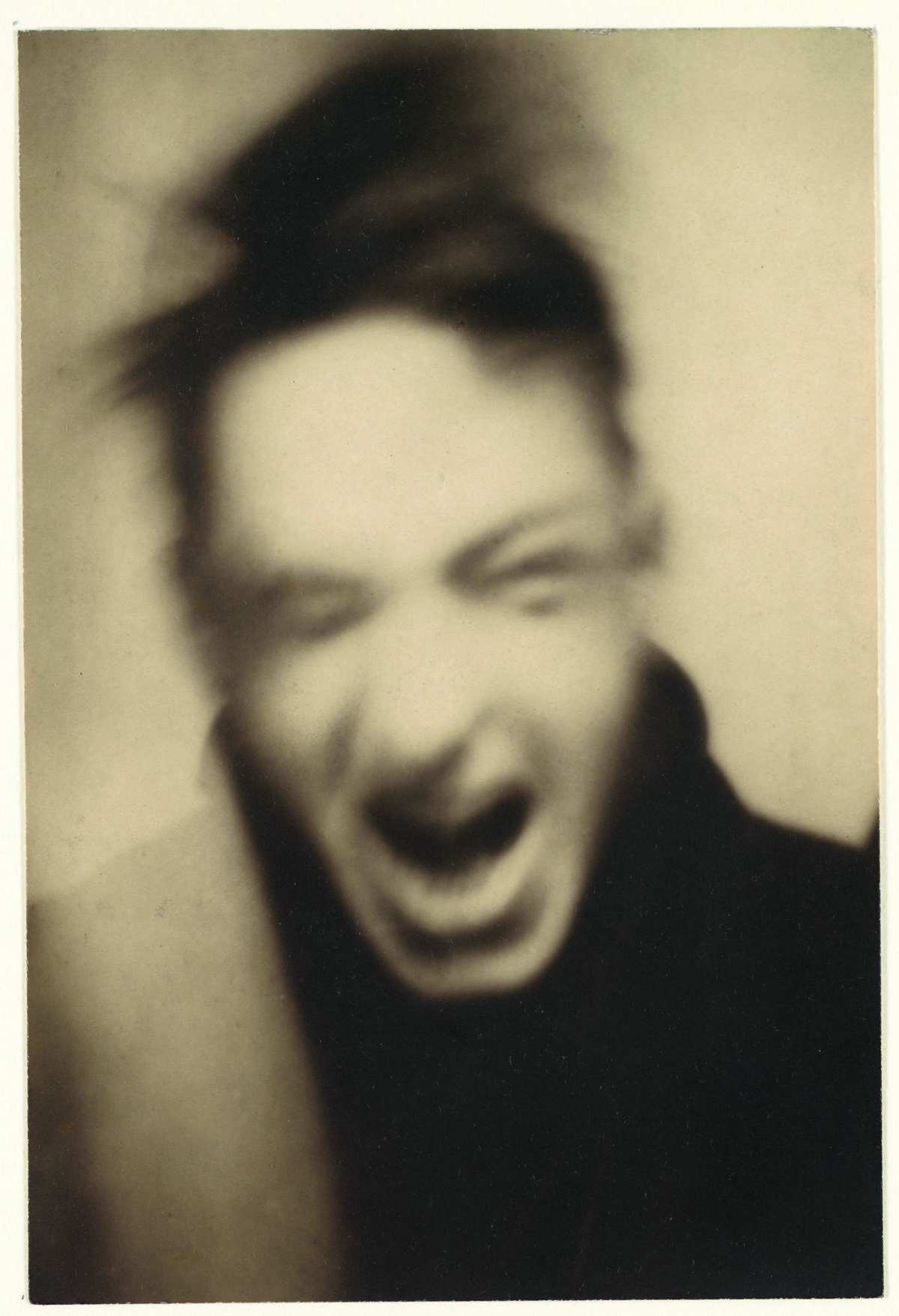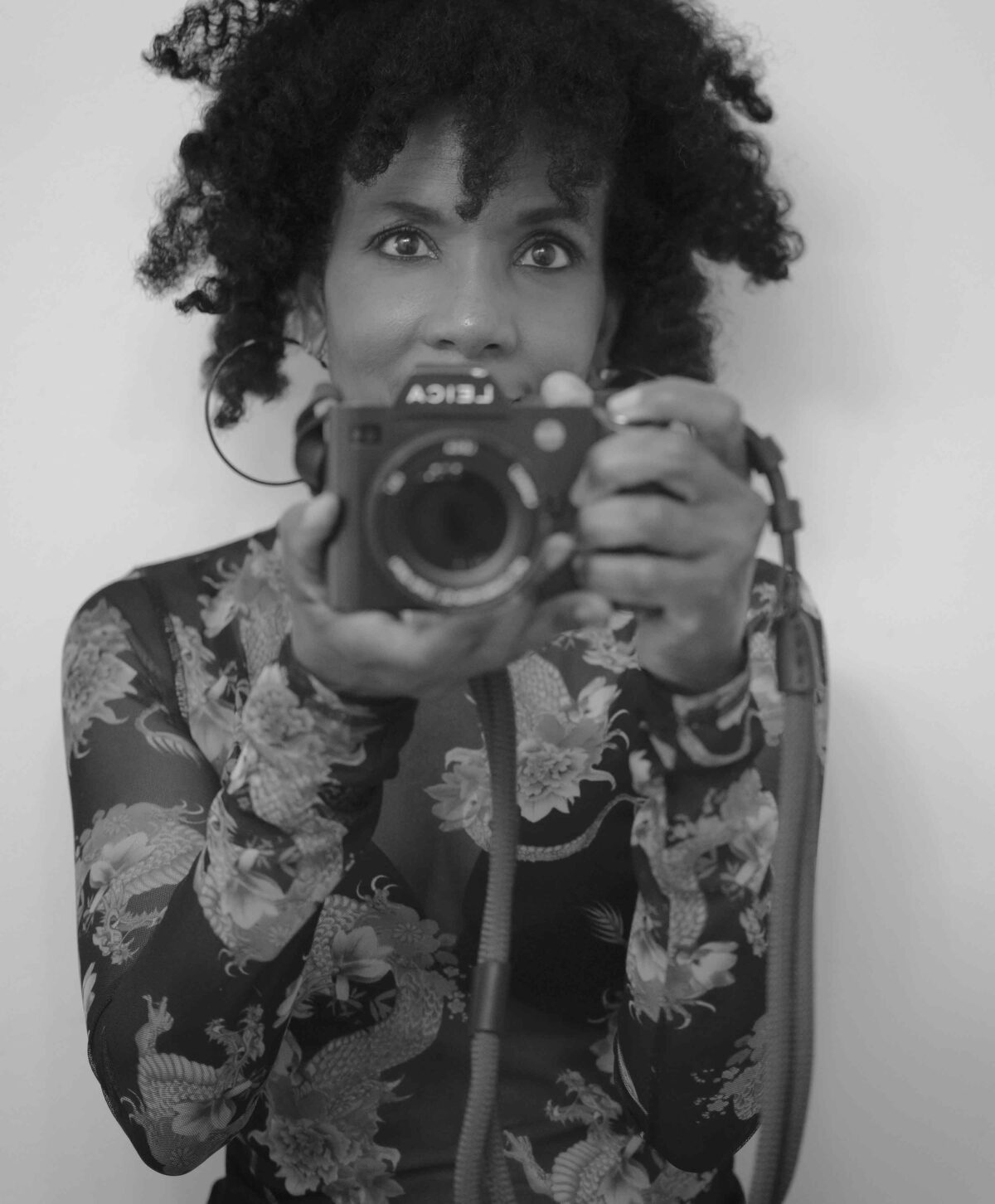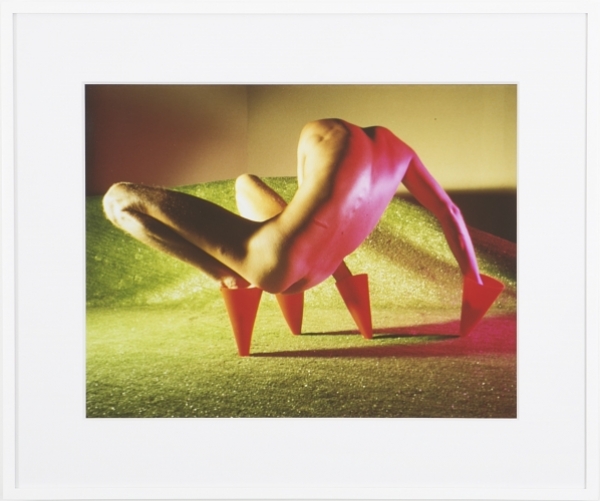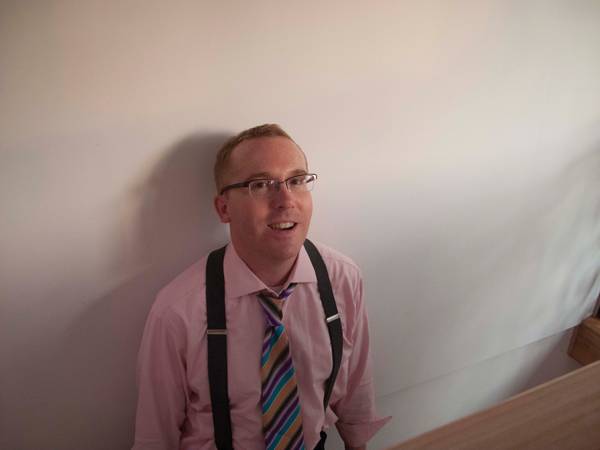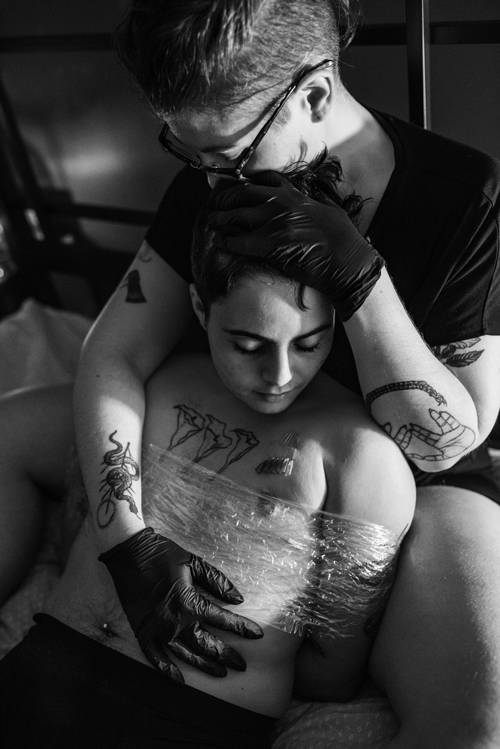Where is Jimmy DeSana? You might search for the photographer all over his first retrospective, Submission, at the Brooklyn Museum through April 16, only to find him oddly elusive. The show, expertly organized by Drew Sawyer, the Phillip Leonian and Edith Rosenbaum Leonian Curator of Photography, traces DeSana’s too-brief career from his involvement in the mail-art networks of the late 1960s to the surreal studio portraits and domestic tableaux he produced before his death from AIDS-related complications in 1990. And yet, in his photographs, DeSana almost never shows his face. His sitters are always partially obscured. His work refuses to present coherent identities even as it pictures aspects of sexuality that remain culturally repressed, rejecting photography’s claim to truth as a tool of social control. Instead, through technical manipulation and distortion, DeSana prompts us to take a closer look at ourselves.
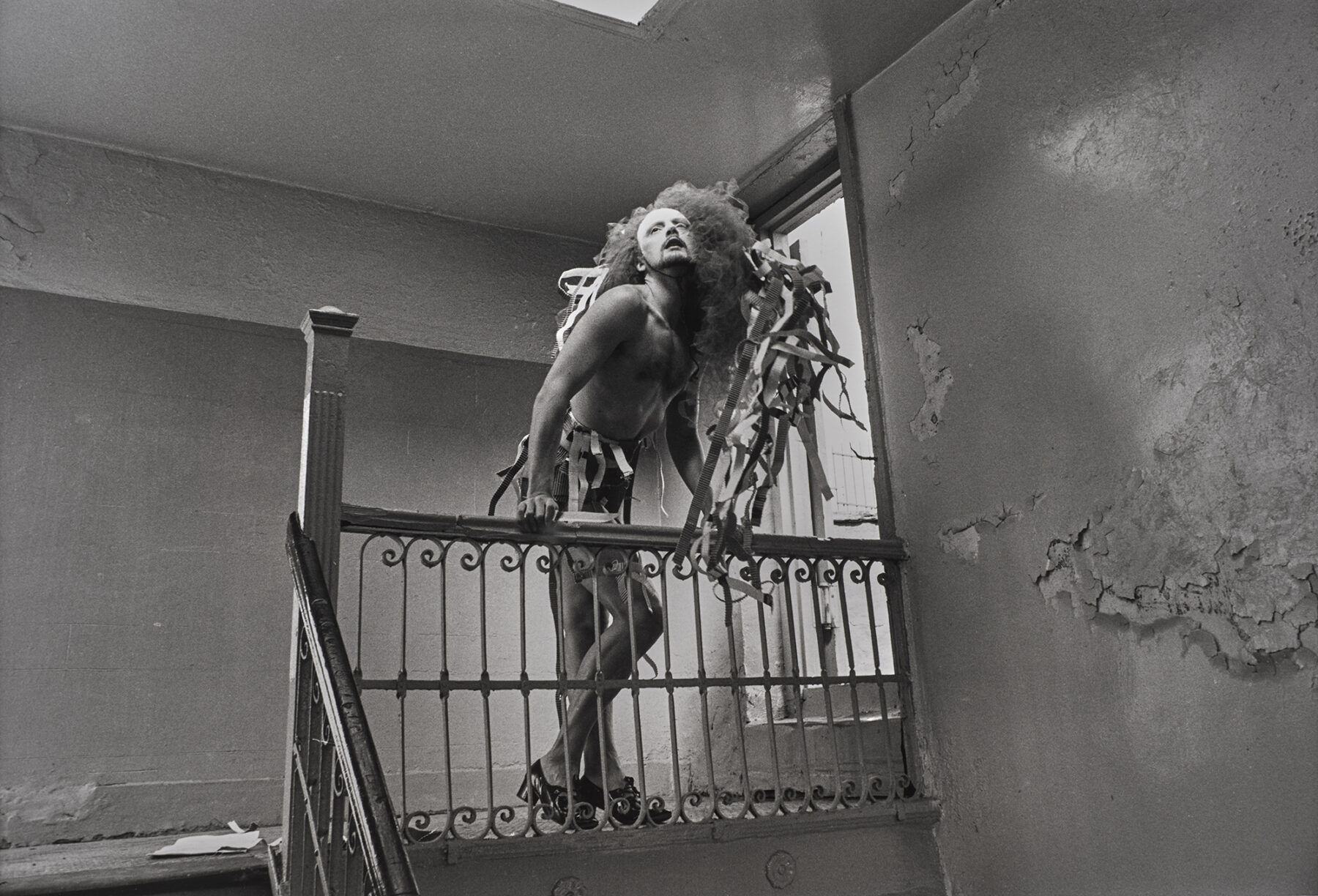

DeSana was born in Detroit in 1949. When he was six, his family relocated to the Atlanta suburbs, where he began taking photographs with a Kodak camera. By the time he entered Georgia State University in 1968, DeSana had already honed a unique style, producing nocturnal photographs of suburban homes and cars caught in the bright glare of a flash. These images, a couple of which appear in Submission, resemble evidence from a crime scene. Indeed, DeSana seems to have regarded home as a site of trauma: after his parents divorced in 1970, his work began to eviscerate the postwar fantasy of nuclear family life. 101 Nudes (1972), completed as his thesis project, comprises 56 photo-lithographs, shot with a Leica, of DeSana’s friends – including Atlanta drag icon Diamond Lil – in and around various domestic environments. Nude bodies, close-cropped or captured in profile, recline on beds or overgrown lawns. In more than one instance, a nude male body is shown ass-up in heels. Harsh flash mimics the blown-out quality of illicit pornography.
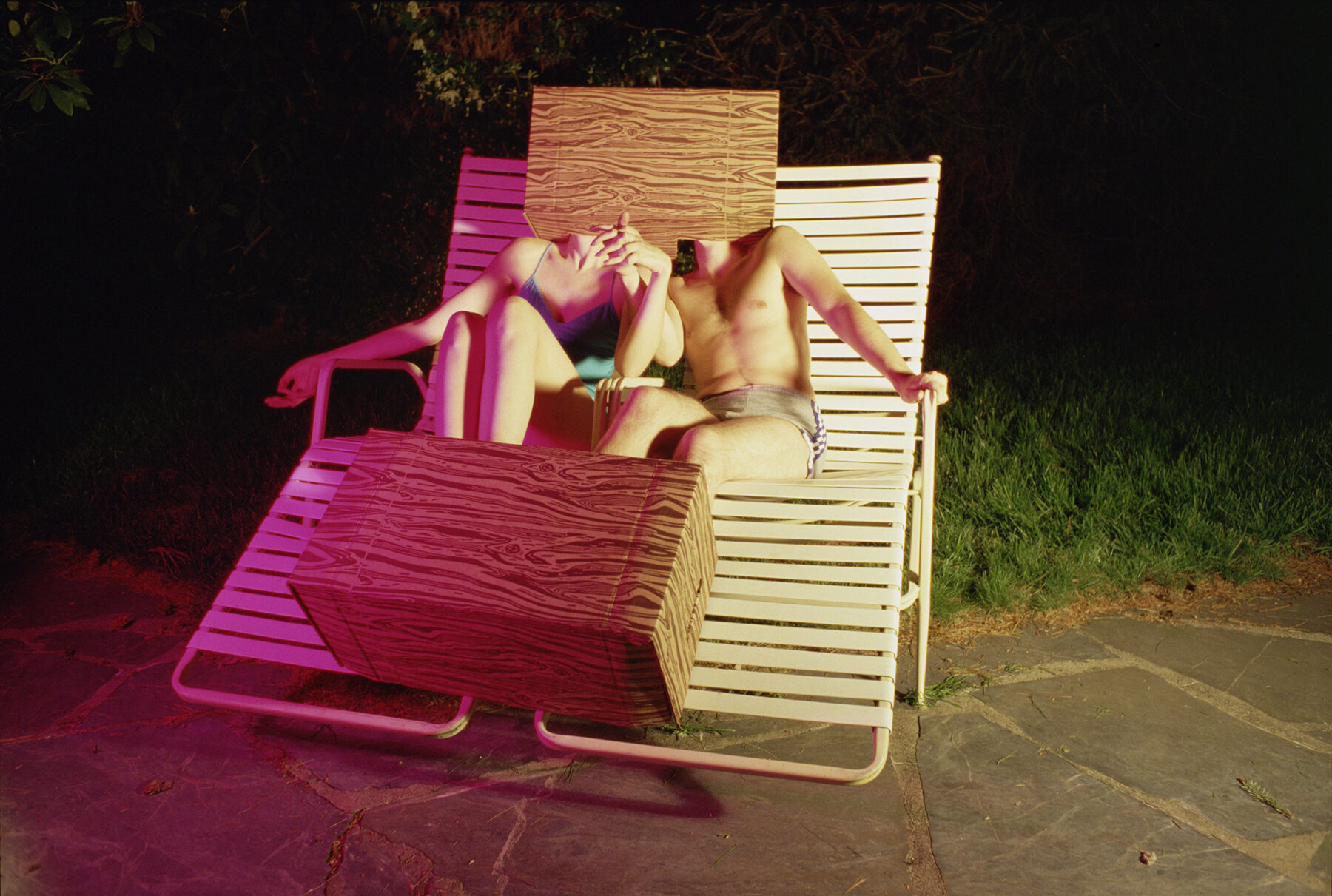

DeSana sent 101 Nudes to the artist AA Bronson, who, along with other members of the General Idea collective, had founded FILE, an alternative art magazine. After moving to New York in 1972, DeSana became a frequent contributor. His Untitled (Rope) (1973), a disturbing self-portrait depicting auto-erotic asphyxiation, appeared in the February 1974 issue. DeSana also began photographing the downtown scene for Trylon & Perisphere, a homoerotic art rag edited by the critic Gregory Battcock. As a nascent gay rights movement sought public acceptance, DeSana and his network of queer artists ran in the opposite direction. Their vision of sexuality was polymorphous, perverse, and clearly threatening to the dominant order. As Bronson later put it in eerily prescient terms, “We considered ourselves a cultural parasite and our method was viral.”
DeSana found kindred spirits in the punk and No Wave scenes, photographing writers and artists such as Kathy Acker, Laurie Anderson, Debbie Harry, and Richard Hell. He produced the album artwork for the Talking Heads’ first single and covers for the avant-garde literary publisher Semiotext(e). He also began a friendship with writer and dominatrix Terence Sellers, who allowed him to photograph her with some of her clients. The resulting collaboration, originally meant to illustrate Sellers’s manuscript, The Correct Sadist (1983), depicts men bound and gagged, burned with cigarette butts, and prodded with stilettos. A figure in a leather mask, supine on carpet, clutches a cat-o’-nine-tails in their teeth like alien antennae. After a fallout with Sellers, DeSana published the photographs in his own book, Submission (1980), with a number of comical additions. The cover features a snarling dachshund beside an erect penis. There are figures in heels and pantyhose on couches, in poses redolent of 101 Nudes, and a remarkable image of an enema being released onto a shag rug, perhaps defiling a suburban family home.
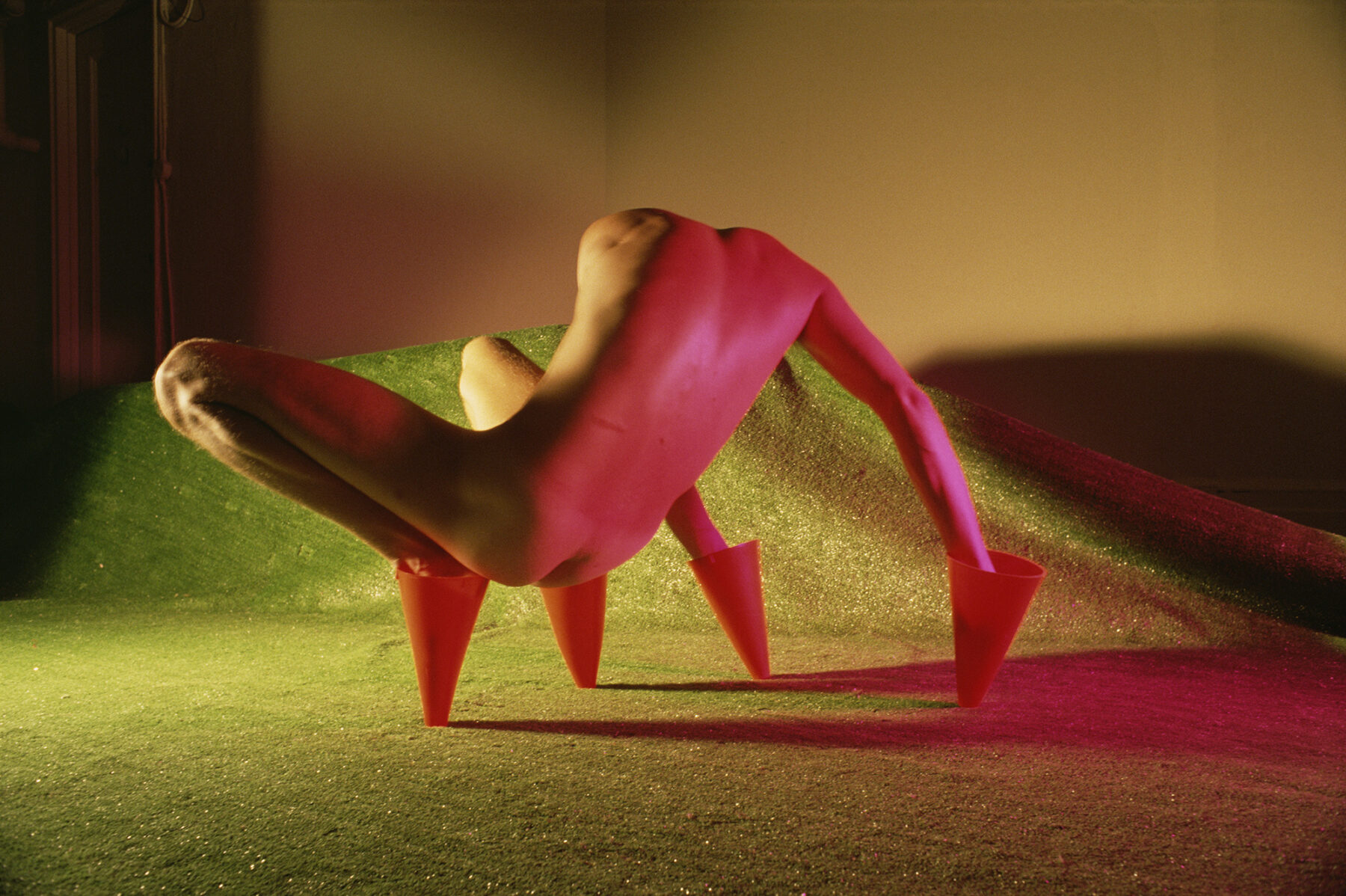

By 1980, DeSana had already begun Suburban (1979-84), the series for which he would become best known. In these deliriously staged photographs, lit with candy-colored gels and tungsten lights, anonymous nudes pose in domestic spaces. Their activities are often hopelessly absurd. In Sink (1979), for instance, a woman dunks her head in a bubbling basin; in Soap Suds (1980), that sink has been replaced by a toilet bowl. Many images have an aspect of bondage to them: the body in Gauze (1979) has been partially mummified with bandages. The unsettling Auto (1980) shows a man with a breathing mask hooked up to the tailpipe of a car (a corollary, perhaps, to Untitled (Rope)). In Plastic Bag and Four Legs with Shoes (1980), bundled-up bodies have transformed into quadrupeds. As Sawyer notes in the catalogue, these photographs are usually named for the objects they feature, as though the figures glued to them have been dehumanized by commodity fetishism. In DeSana’s world, suburban identity is inextricable from the anonymizing act of consumption.
After a ruptured spleen led to DeSana’s HIV diagnosis in 1984, he produced a series of macabre self-portraits in which his own body is fractured or distended. The raw Stitches (1984) spotlights his recent surgical scar. Bubblegum (1984), meanwhile, pictures him blown up like a sickly green balloon. DeSana also performed a kind of surgery on his own photographs, cutting them up, collaging their surfaces, and rephotographing them: see how tendrils of photo-paper snake across Eyelashes (1986), obscuring the face from which they grow to terrifying length.
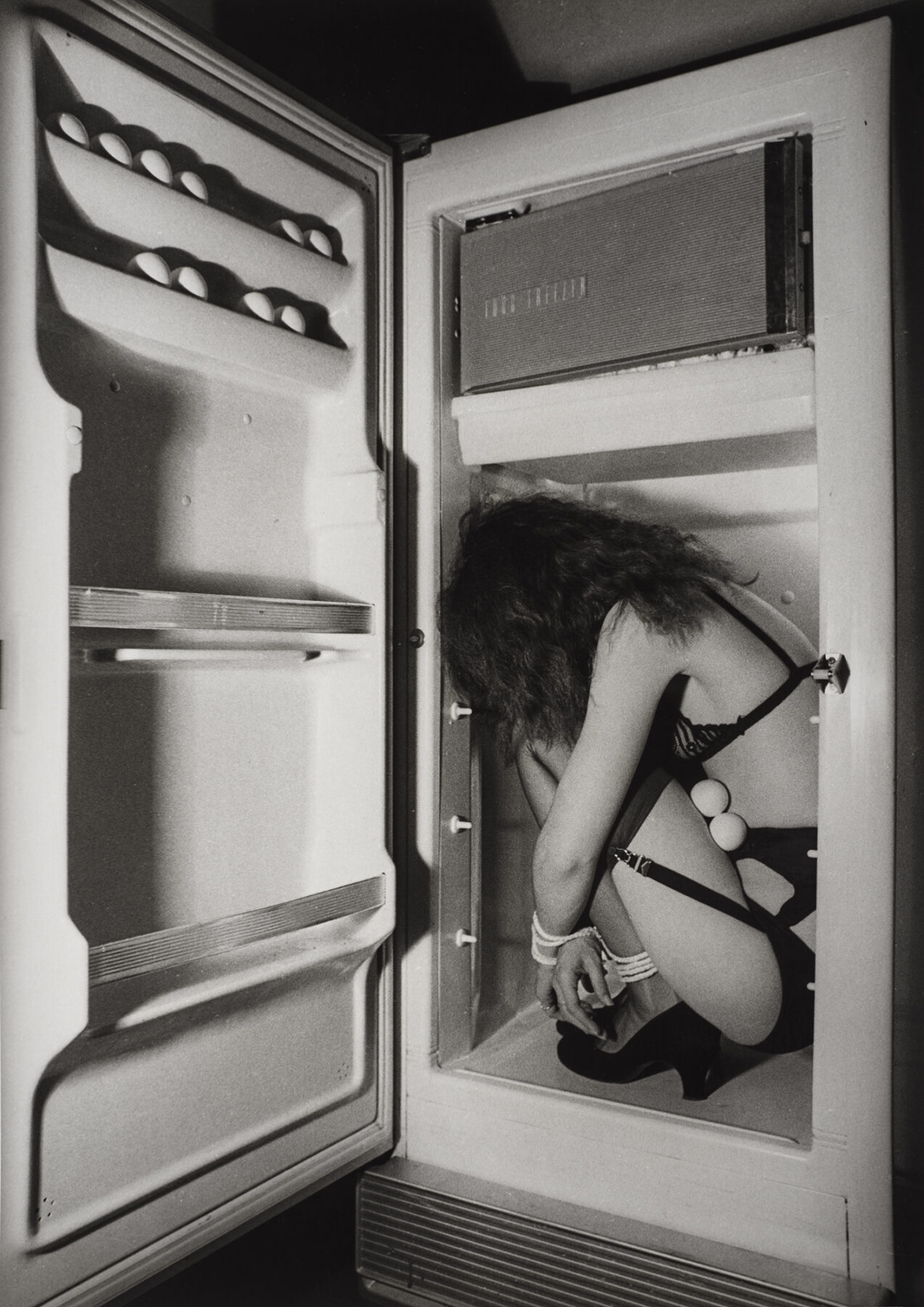

“A photograph is how much you want to lie, how far you want to stretch the truth about the object,” DeSana told filmmaker and curator Diego Cortez in a 1986 interview. Consider how much this approach differs from DeSana’s more famous contemporaries, Larry Clark and Nan Goldin, whose documentary photographs profess an intimate veracity that informs so much image production even today. The “lies,” or rather illusionism, in DeSana’s photographs make no such claims to authenticity, and yet they tell us profound truths about our twisted desires, our distorted self-image.
Evan Moffitt is a writer based in New York. His work appears often in Artforum, Art in America, Art Review, Aperture, Architectural Digest, and Frieze, where he was formerly senior editor.



